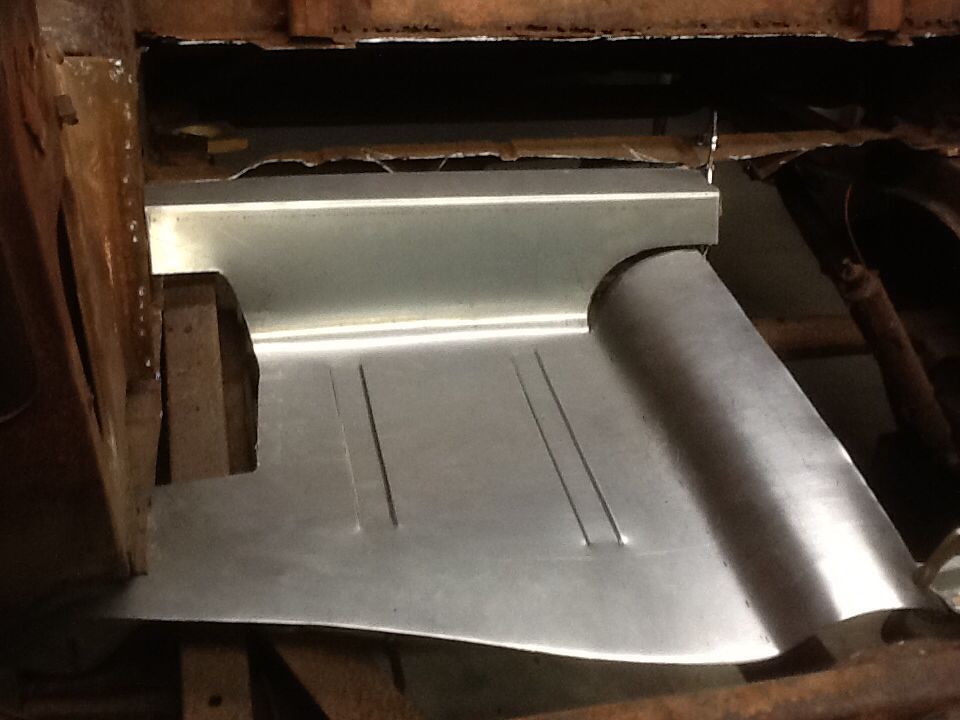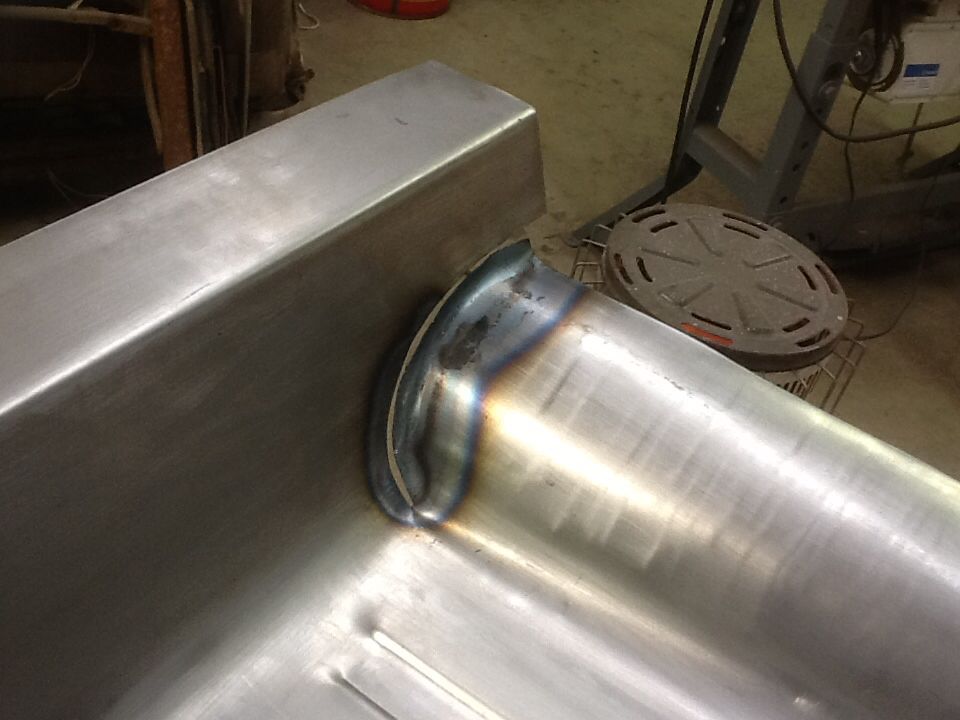Chris, what was the need for these shrinks?

Looking at the next picture, the red line shows the weld seam, which is where the majority of the shrinking occurs. The yellow line is outside the heat affected zone enough that no shrinking occurs out here... The area between the two lines is caught between two differing forces. The red area wants to shrink, the yellow wants to remain unaffected, and the area between forms a sinusoidal wave (up and down) as it's caught in the middle. So if you see what from outward appearances looks like high spots , it is the metal distorting from adjacent area shrinking. Fix it by stretching the weld that has shrunk. You'll see those "high" spots (that are actually high, low, high, low, repeat) start to disappear as the shrink is stretched back out. So point being, don't shrink any adjacent areas next to a weld that appear to be high spots. Stretch the weld, leave the other areas alone. If you look, the areas of these shrinks show the entire area to be low as compared to the fender. If this is what occurred, the wrong "repair" was used in shrinking high spots.

I'll agree with John, use this as a learning tool to cut out the damaged (shrunk) area and install new, larger patch. And as Chris Hamilton mentioned earlier, add the flange with the correct fold to match the opening to limit welding needed (and shrinking). Some hints that may help you see better success next time:
Once you cut out the shrunk door skin area, stretch out the inner door in the area of the previous weld until it raises to the proper level (compare to fender)
Form the repair patch with proper crease, proper crown, proper size... so that when it is trimmed and fitted in place it matches the fender profile but has no gaps to the door skin. Any gaps will more readily pull together as shrinking occurs, adding to a low area..
For your final trimming on both the door skin and the patch, use the offset shears that have the slightly "serrated" jaws as opposed to a smooth finish. These will actually add a slight amount of stretch when cut, to help out in negating some of the shrinking effect. You will surely need planishing (stretching) once weld is completed, but perhaps it won't be as much.



